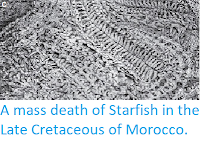Seamounts are deep-sea biomes in the global ocean which harbor diverse habitats and benthic communities. Sponges are one of the dominant benthic groups in seamount ecosystems, playing important ecological roles by providing habitat and settlement substrate for other seamount invertebrates, such as Molluscs, Hydrozoans and Echinoderms. Suspension-feeding Brittle Stars and Crinoids with long and flexible arms are often observed perching on or wrapped around Sponges.
In a paper published in the journal PeerJ on 27 May 2020, Ruiyan Zhang of the School of Oceanography at Shanghai Jiao Tong University and the Key Laboratory of Marine Ecosystem Dynamics at the Second Institute of Oceanography of the Ministry of Natural Resources, Yadong Zhou, also of the Key Laboratory of Marine Ecosystem Dynamics at the Second Institute of Oceanography of the Ministry of Natural Resources, Ning Xiao of the Laboratory of Marine Organism Taxonomy and Phylogeny of the Institute of Oceanology and the Center for Ocean Mega-Science of the Chinese Academy of Sciences, and Chunsheng Wang, also of the School of Oceanography at Shanghai Jiao Tong University, the Key
Laboratory of Marine Ecosystem Dynamics and the State Key Laboratory of Satellite Ocean Environment Dynamics at the Second Institute of
Oceanography of the Ministry of Natural Resources, describe a new Starfish species, which was found attaching to deep-sea Sponges, based upon five specimens from northwestern Pacific seamounts.
Species of the family Brisingidae possess 7 20 spiny arms that are up to about 40 times the length of the disk radius. As exclusive deep-sea inhabitants, their long arms and spines potentially equip them to be excellent suspension feeders, stretching out and gathering food particles in the water column in the resource-diluted deep ocean. The Brisingidae is composed of 62 extant species designated into 10 genera. The genus Astrolirus currently contains only one species, Astrolirus panamensis, and is differentiated from the other genera based on the presence of intercostal plates on arms and a pair of marginal plates between the first adambulacral plates. Astrolirus panamensis was discovered in the eastern Pacific Ocean at 1820- 2418 m depth, with 1 eight-armed specimen and 27 nine-armed specimens of varying size (disc diameter 6- 26 mm) reported. Thereafter, Astrolirus has seldomly been reported or investigated.
The new species is named Astrolirus patricki, in honour of the character `Patrick Star' in the famous cartoon `SpongeBob Squarepants', who always spends time with his best friend `SpongeBob', a benthic Sponge. Since all specimens of the new species were observed in situ living on Sponges, it was name by Patrick to reflect this curious relationship.
In situ photographs of Astrolirus patricki. Zhang et al. (2020).
All five specimens of the new species are seven-armed and were captured from Hexactinellid Sponges. Occasionally 2- 3 individuals were spotted on the same Sponge along with numbers of Ophiuroids and Crinoids. The new species differs greatly from Astrolirus panamensis in morphological characters and living habitat.
During the COMRA (China Ocean Mineral Resources R & D Association) cruises DY31, DY37, DY41, DY56 and a seamount cruise in the northwestern Pacific Ocean seamounts from 2013 to 2019, five specimens of the new species were collected by mechanical arms or siphon-pumps equipped on Human operated vehicles and remote operated vehicles. Specimens were photographed in situ and on board by digital cameras. Tube feet tissues were extracted from each specimen and frozen in -80°C refrigerator or liquid nitrogen for later molecular experiments, while other parts of specimens were preserved in 100% ethanol for morphological examinations. Morphological identification was conducted under a stereoscopic microscope.
Astrolirus patricki has seven robust arms. The tntercostal integument is densely covered by irregular, abutting plates. There is no conection between proximal arm plates. The first pair of adambulacral plates is separated by a pair of marginal plates. A large interradial plate above the first marginal plates, is visible from the abactinal side, covered by scattered spinelets. The mouth spines and proximal adambulacral spines are robust, and densely distributed. There are 3-4 uboral spines and 1-2 subambulacral spines, the proximal ones of which are truncate and capitate. There is one lateral spine to each adambulacral plate, starting from about the 8th. There is a pair of gonads to each arm.
Astrolirus patricki, abactinal view. (A) Paratype RSIOAS028. (B) Paratype RSIOAS003. (C), (D), (H), holotype RSIOAS044, (C) Abactinal surface of disk and proximal part of arms, with red arrow pointing at the madreporite body, white arrow at the interradial plate and yellow arrows at the marginal plates. The red frame indicates the proximal region of arm connecting the disk and genital region, where pedicellariae do no form regular costae. (D) Abactinal surface of arm genital area with mosaic plating, red arrows show the costae bands. (E) Paratype RSIOAS003, abactinal surface of arm genital area, red arrows show the costae bands. (F) Paratype RSIOAS052, zoom in view of the abactinal disk, showing the multiple sharp spinelets on disk plates. (G) Paratype RSIOAS052, a piece of dissected skin from abactinal disk, shot from the inner side of the skin, showing the small round disk plates. (H) Abactinal surface at the middle of arm, black arrows indicate the pedicellariae bands. Zhang et ai. (2020).
See also...
Follow Sciency Thoughts on Facebook.








